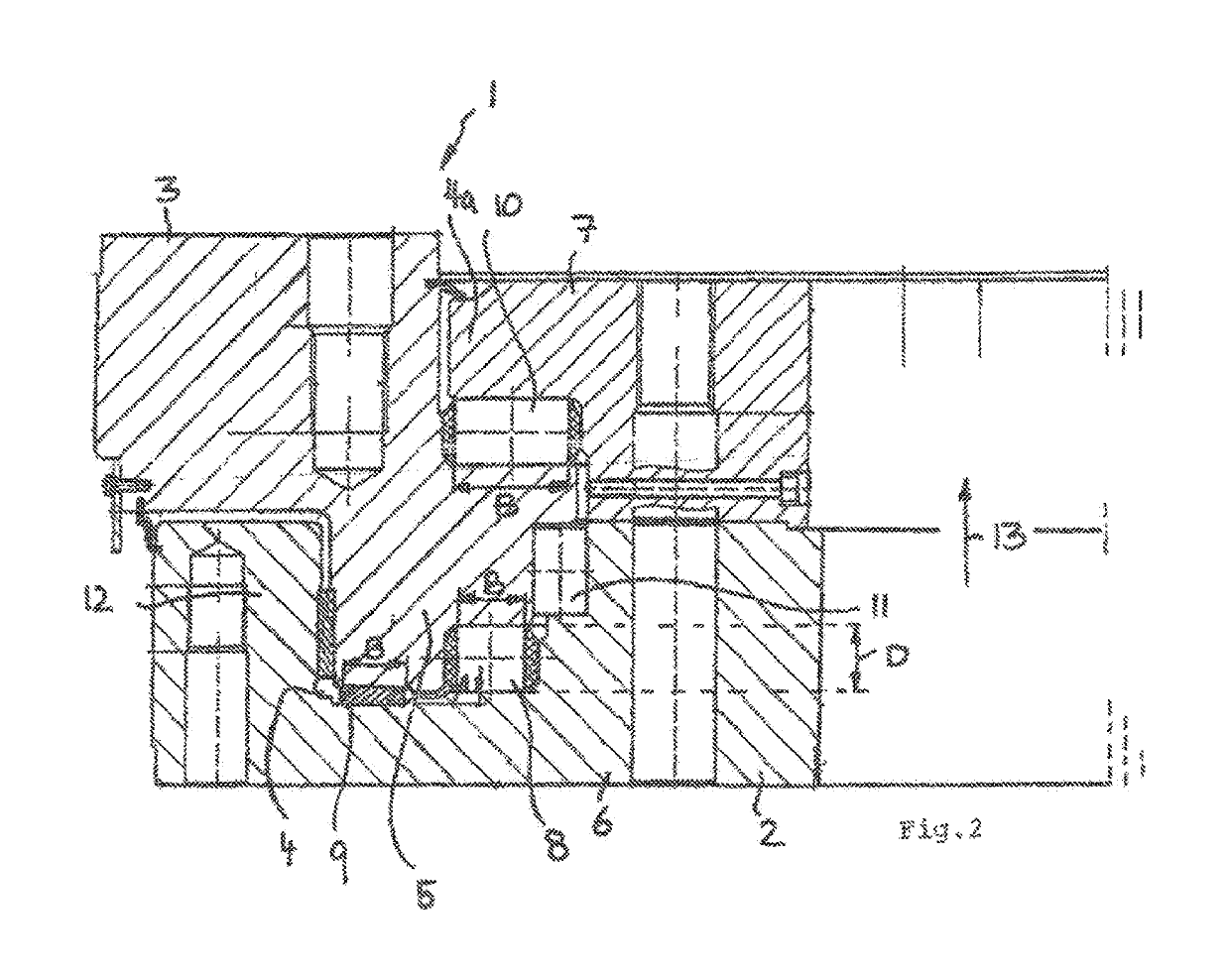Rotary bearing
a bearing and rotor technology, applied in the direction of roller bearings, sliding contact bearings, mechanical equipment, etc., can solve the problems of limited area moments of inertia that can be achieved in the bearing race, premature wear occurs in the region, and is subject to high loads. , to achieve the effect of improving support, facilitating production, and reducing the number of bearings
- Summary
- Abstract
- Description
- Claims
- Application Information
AI Technical Summary
Benefits of technology
Problems solved by technology
Method used
Image
Examples
Embodiment Construction
[0028]As FIGS. 1 and 2 show, the rolling bearing 1 can comprise two bearing races 2 and 3, of which one bearing race 2 forms an inner ring and the other bearing race 3 forms an outer ring. Said inner ring 2 can have a smaller inner diameter than the outer ring 3 and / or the outer ring 3 can have a larger outer diameter than the inner ring 2.
[0029]The one bearing race 2, preferably the inner ring, can have a groove 4 which is open toward the other bearing race 3, preferably toward the outer ring, and into which the other bearing race 3 engages with a lug ring 5 that is provided thereon so as to form a gap and / or with spacing on all sides. This groove 4 can advantageously encompass the lug ring 5 from four sides, namely on two opposing sides of the lateral surface and on two opposing sides of the front side of the lug ring 5.
[0030]Here, said groove 4 has a—roughly—U-shaped bottom contour in which the groove bottom—right and left in FIG. 1—is encompassed by two bearing ring limbs. Furth...
PUM
 Login to View More
Login to View More Abstract
Description
Claims
Application Information
 Login to View More
Login to View More - R&D
- Intellectual Property
- Life Sciences
- Materials
- Tech Scout
- Unparalleled Data Quality
- Higher Quality Content
- 60% Fewer Hallucinations
Browse by: Latest US Patents, China's latest patents, Technical Efficacy Thesaurus, Application Domain, Technology Topic, Popular Technical Reports.
© 2025 PatSnap. All rights reserved.Legal|Privacy policy|Modern Slavery Act Transparency Statement|Sitemap|About US| Contact US: help@patsnap.com


